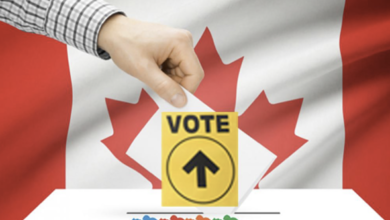Everyone wins in third anti-racism basketball tournament in Halifax
HALIFAX, N.S. — When Chris Johnson started the anti-racism tournament in 2020, he never thought he would still be doing it three years later.
Bringing together youth from across the Halifax area for three-on-three basketball games, the third-annual tournament ran from Friday to Sunday at Citadel High School, encouraging diverse groups of people to collaborate.
“They’re understanding now, at a younger age, how to fight against racism,” Johnson said in an interview. “They’re becoming pillars in the world that can help eliminate something we see every day.”
Friends, family and players cheered from the sidelines, eager to see the finale of the friendly competition.
The tournament also serves to encourage young athletes to continue playing basketball. With many other former professional players speaking at the event.

Johnson first had the idea for the tournament in the wake of the death of George Floyd. Using basketball as a platform for his message, he drew a crowd back in 2020. Now, Johnson’s hope for the tournament is that every participant walks away with at least one new friend that they may have never met otherwise.
“I felt like … I could be another person to go and stand in protest, or I could use basketball,” he said.
Hailing from North Preston, Johnson has dedicated more than a decade of his life to the sport. Playing locally for the Halifax Hurricanes and in the U.S. through the NCAA, he stepped away from the professional scene to help connect communities.
The Tunnel Vision Association, the group responsible for the anti-racism tournament, was founded by Johnson. Outside of the anti-racism tournament, the association organizes a multitude of programs and special events for youth.
Johnson’s association partnered with the PREP Academy, a group that helps African Nova Scotian students pursue and prepare for college and university. Two students that participated in last year’s tournament were granted $1,500 scholarships at the anti-racism tournament.

The game format was small-scale: only half of the basketball court was used, and games lasted for two 10-minute halves. Plays were fast within the tight space.
The number of players was also bigger than ever before, with over 200 players on 65 teams participating in the tournament.
After the final buzzer rang out through the gym, kids stormed the court to shoot hoops and dunk on each other in casual competition. Smiles, shouts, and laughter filled the court.
“You see kids from different communities now connected like brothers and sisters,” Johnson said. “I think that’s so important.”
Johnson is excited for the next iteration of the tournament, set for 2024.




